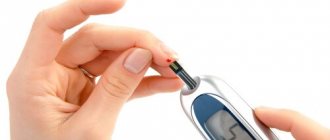What is heart bypass surgery?
Coronary artery bypass surgery is an open-heart surgery in which a bypass path is created for cardiac blood flow, bypassing the affected arteries.
CABG surgery is performed using fragments of other vessels of the patient, which are most often taken from the lower extremities. Surgery is performed only in specialized clinics by highly qualified cardiac surgeons, with whom a transfusiologist works together to provide artificial blood circulation. It should be noted that the principle of this complex operation was developed by the Soviet doctor Vladimir Demikhov in the sixties of the last century.
Recovery after coronary artery bypass surgery
Immediately after surgery, the patient is on artificial ventilation for a certain time. And after natural breathing is restored, prevention of congestion is required. To do this, the patient is asked to inflate rubber balls several dozen times a day. As a result, the lungs expand.
Recovery from open-heart CABG involves caring for the surgical wound. The incision is made down the middle of the sternum. In addition, there is damage to the lower extremities - where the doctor took the material for bypass (the great saphenous vein). Skin wounds heal in 1-2 weeks. After this, the person is allowed to wash in the shower.
Banding after CABG is not mandatory, but is preferred to reduce the risk of sternal suture dehiscence. While skin heals in an average of 10 days, bone heals over several months. Patients often ask how long to wear a bandage after CABG. It is usually used for 4-6 months.
There should be no arrhythmia after CABG. If it occurs, it is not a consequence of the operation. There are a large number of arrhythmias. Some may be caused by myocardial ischemia, others by independent pathologies, and still others by previous myocardial infarction. Typically, the heart rhythm normalizes after surgery due to improved blood supply to the heart muscle.
The consequences of CABG surgery are assessed 2-3 months after it is performed. By this time, angina should no longer bother the patient. The person is given a stress test and IVF is removed to understand how much the blood supply to the myocardium has improved. If there is no pain after CABG during physical activity, the operation is considered successful.
Recovery after CABG can be carried out in a clinic, in a sanatorium or at home. Naturally, the most successful rehabilitation will be under the guidance of a specialist. But some patients undergo rehabilitation after CABG at home, which is usually associated with a desire to save money. If there is no money for quality restoration, you need to take care of yourself. Exercise after CABG surgery is very important. You need to start with walking - at least 1 kilometer a day. Then - gradually increase the load.
Patients often ask when they can sleep on their side after CABG. You can lie on your side almost immediately, if that’s comfortable for you. Most doctors do not prohibit this from happening to their patients, since sleeping on the side does not affect the results of the operation.
Find a specialized clinic
Varieties
Depending on which vessel is used for the bypass, there are two types of heart bypass:
- aortocoronary – CABG;
- mammarocoronary – MCS.
CABG, in turn, is divided into:
- autovenous, when the great saphenous vein of the leg is used;
- autoarterial - when using the radial artery (if the patient suffers from varicose veins).
For MCS, the internal mammary artery is used.
In addition, there is a division of bypass into:
- standard – using an artificial blood supply device (heart stopped);
- without the use of artificial blood supply to the heart (the heart does not stop), which requires the highest qualifications of the surgeon;
- hybrid, when different types of additional procedures are combined.
Options for aortofemoral bypass surgery
Aortofemoral bypass surgery can be performed in two options:
- Bilateral aortofemoral bypass surgery (aorto-bifemoral). This option involves restoring blood flow to both legs when both iliac arteries are blocked. The main branch of the prosthesis is sutured to the aorta, the branches of the prosthesis are sutured to the femoral arteries. 3 accesses are performed, two of them in both groin areas, one large on the left side.
- Unilateral aortofemoral bypass surgery is performed when one of the iliac arteries is blocked. Accordingly, only two accesses are required. One is carried out in the groin area on the affected leg, the other on the left side to the aorta.
For the operation to be successful, it is necessary to ensure good blood flow from the prosthesis; sometimes the arteries in the thigh are severely affected. In these cases, our clinic uses two-story bypass methods, when a connection is created in the groin area between the prosthesis and the most suitable artery, after which a shunt is launched further from the prosthesis from the great saphenous vein into the underlying arteries on the leg. Thus, the blood flow from the prosthesis is distributed throughout the leg and there is no stagnation of blood, leading to thrombosis and blockage of the prosthesis. If there is severe damage to the arteries in the groin, it is possible to perform femoral artery replacement. This made it possible to restore blood flow in poor condition of the peripheral vascular bed.
Indications for surgery
Bypass surgery of the affected heart vessels is performed for arterial stenosis causing ischemia. The most common cause is atherosclerosis, when the lumen of the arteries is blocked by atherosclerotic plaques, or thrombosis.
These pathologies are the main indications for surgical intervention. Additional examination is carried out when:
- retrosternal pain radiating to the left arm, shoulder, lower jaw, neck;
- hypertension;
- tachycardia; constant nausea, heartburn.
Where is vascular bypass performed?
Vascular bypass is an effective way to restore blood flow after advanced forms of varicose veins. If you have already been diagnosed with a severe form of varicose veins or you want to undergo vein diagnostics, then make an appointment at the Phlebological Center named after. Pirogov. Our doctors will help you restore blood circulation in the veins of your legs.
We are located at the address: Moscow, Gagarinsky Lane, 37/8 (metro station “Smolenskaya”, Arbatsko-Pokrovskaya line, metro station “Kropotkinskaya”).
We are open for you from Monday to Friday from 8:00 to 21:00, Saturday and Sunday from 9:00 to 18:00. Call +7.
Back to articles
Contraindications
CABG surgery is not performed in the following cases:
- with renal failure;
- uncompensated diabetes mellitus;
- chronic nonspecific lung lesions;
- malignant neoplasms;
- post-stroke hypertension.
There are also relative contraindications for bypass surgery:
- heart failure;
- obesity;
- scarring of the heart, minimizing cardiac blood output below 30%;
- Menkenberg's arteriosclerosis - damage to all coronary arteries;
- elderly age.
AMI is considered as a contraindication at the discretion of the physician.
Diet after bypass surgery
The main factor that negatively affects the condition of the vascular wall and blood supply to the myocardium is excessive cholesterol in the blood. This is why it is so important to give up animal fats and diversify your diet with foods that remove cholesterol from the body and prevent its deposition on the walls of blood vessels.
The diet should contain sufficient quantities of vegetables, herbs, fish dishes, and chicken without fat. It is better to choose dairy products with a reduced fat content. It is recommended to consume vegetable oil as a source of fat - 2 tablespoons per day.
Preparing for the intervention
The basis of preparation for CABG surgery is coronary angiography, a procedure that thoroughly examines the relief of the coronary endothelium. To carry it out and subsequent detailed examination, the patient is hospitalized in a hospital. To perform coronary angiography, special catheters are inserted into the left and right coronary arteries, through which X-ray contrast is applied. X-rays then scan the endothelium. The procedure allows you to accurately determine the location and degree of narrowing of the vessel, while the patient receives a high dose of radiation. In addition, the manipulation cannot be performed if there is an allergy to iodine (x-ray contrast).
Therefore, in addition to coronary angiography, CT coronary angiography is used. It is more accurate, more expensive, but eliminates radiation exposure. True, contrast is still necessary, and a person weighing more than 120 kg cannot fit into the device.
If the examination reveals narrowing of the arteries by more than 75%, CABG is prescribed to minimize the risk of AMI or its recurrence. In addition to coronary angiography, the following are required: CBC, OAM, general biochemistry, coagulogram, lipidogram, ECG, EchoCG, ultrasound of the abdominal organs.
If the patient takes anticoagulants, their use is agreed with the doctor: usually a break is taken for two weeks before surgery. Other groups of pharmacological agents also require consultation with a doctor.
The day before coronary artery bypass surgery, the patient is examined by an anesthesiologist, correlating anesthesia with the height, weight, age of the person being operated on, and individual intolerance to drugs. On the eve of the intervention, the patient is sedated (taken sedatives). Necessarily:
- do not eat after 18:00;
- do not drink after midnight;
- prescribed medications are taken immediately after dinner;
- in the evening - shower.
Tests and diagnostics
Complete information about the state of the vascular system of the heart is obtained after coronary angiography and multislice computed tomography. Both research methods make it possible to assess the degree of damage to the coronary vessels and determine further treatment tactics.
MRI of the heart and coronary vessels
Magnetic resonance imaging is considered a non-invasive diagnostic test, which is based on the nuclear magnetic resonance method. MSCT allows you to obtain a clear image of the heart and assess the condition of the coronary vessels. Absolute contraindications:
- the presence of clamps, staples and metal implants;
- the presence of an insulin pump, pacemaker, ferramagnetic implant and other electronic systems.
The price of the study ranges from 15 to 35 thousand rubles. Compared to the magnetic resonance imaging method, cardiac CT is more informative in terms of assessing the condition of the vascular system of the heart.
Additional examination methods:
- coagulogram;
- biochemical and general blood test;
- Ultrasound of the abdominal organs;
- lipid spectrum;
- chest x-ray;
- Ultrasound scanning of the lower extremities;
- ECG;
- EchoCG;
- Analysis of urine.
Progress of the operation
To perform a heart bypass, the doctor needs to cut the sternum, which then heals for a long time, which determines the length of the rehabilitation period. Depending on the type of CABG, a heart-lung machine is used or not. The heart is not stopped unless additional manipulations are required: removal of an aneurysm, replacement of valves. Bypass surgery on a beating heart has the following advantages: no complications from the immune system or blood; intervention time is shorter; rehabilitation is faster.
The essence of the operation is to create a workaround.
To do this: the surgeon opens access to the heart, takes a vessel for a shunt, if the heart stops, perform cardioplegia and turn on the artificial blood flow equipment. If the heart is beating, special devices are applied to the intervention area. The bypass itself involves stitching together blood vessels: one end of the bypass is connected to the aorta, the other to the coronary artery, which is located below the stenosis. After this, the heart is started again and the equipment is turned off. The sternum is secured with metal staples, and the skin on the chest is secured with regular sutures. The bypass lasts about four hours.
Features of the operation at the Innovative Vascular Center
Although aortobifemoral bypass surgery is one of the most common vascular operations and is performed in many vascular departments, our clinic uses certain approaches to improve the immediate and long-term results of the operation, especially in complex cases.
The main problem when performing ABBG remains the traumatic approach and associated early postoperative problems. In our clinic, a retroperitoneal approach is used to perform aortofemoral bypass surgery, without opening the abdominal cavity. This allows operations to be performed under epidural anesthesia without general anesthesia and ensures a comfortable postoperative period.
To perform repeated operations on the aorta in case of suppuration of vascular prostheses or thrombosis, our surgeons can use access to the thoracic aorta using an extended left-sided lateral approach. This approach made it possible to perform operations on patients who were refused by all other clinics.
Another important feature of surgical treatment in our clinic is the possibility of angiography during surgery. We definitely conduct a contrast study after aortofemoral bypass surgery in order to assess the hemodynamic correctness of the vascular reconstruction and identify possible problems. This approach increases the possibility of performing the operation and improves immediate results.
The use of intraoperative angiography makes it possible to operate on patients with severe calcification of the abdominal aorta, which does not allow the use of conventional methods of vessel clamping. To control bleeding, we use inflating a special balloon in the aorta, which allows us to block the blood flow while the vascular graft is sutured to the aorta. The balloon is passed through an access on the arm. The same technique allows us to successfully operate on ruptured abdominal aortic aneurysms.
The results of aortofemoral bypass surgery in our clinic are very good. Treatment success is achieved in 97% of patients with damage to the aortoiliac segment.
Complications
Often after surgery, the patient experiences a feeling of pain, heat, and discomfort in the chest. This is not a reason to panic; you need to inform your doctor about this, who will prescribe relief medications. The most common complications after cardiac bypass surgery are: pulmonary congestion, anemia, pericarditis and other inflammatory processes, phlebitis of veins adjacent to the shunt, immune disorders (during cardiac arrest), arrhythmias.
To prevent congestion in the lungs, it is recommended to inflate balloons up to 20 times a day. Anemia can be controlled with a special diet and, if necessary, with blood transfusions. Treatment of other complications is individual for each patient.
Symptoms
After surgery, patients are admitted to the intensive care unit, where urinary tract catheterization and artificial ventilation are performed. Painkillers are administered and antibiotics . Heart function is assessed on a monitor in the form of electrocardiography. After stabilization of the patient’s condition, the patient is transferred to independent feeding and breathing. The range of movements increases gradually, step by step.
At first, patients are bothered by chest pain, which is due to the specifics of the operation being performed, because it is open to the public. As the sternum grows together, the pain subsides. Also, discomfort is observed in the area where the vein was taken. All symptoms are temporary and the patient gradually returns to his usual lifestyle.
Rehabilitation
The recovery period is long. You cannot wash for two weeks after bypass surgery, as the wounds are extensive and there is a risk of secondary infection. Daily dressings, treatment with antiseptics. You will need to wear a chest bandage for six months to prevent the stitches on your sternum from coming apart.
Average rehabilitation is about three months. During this period, blood and blood flow will normalize, and the sternum will heal. An assessment test for the possibility of a full life is a stress test (for example, bicycle ergometry).
Early postoperative period
After the operation, the patient lies in the intensive care unit for several days. During this period, vital signs are monitored, the seams are treated with antiseptic solutions, and the drainages are washed. Every day a blood test is performed, a cardiogram is recorded, and body temperature is measured. A slight fever and cough are normal at first. After the ventilator is turned off, the patient is taught breathing exercises to effectively remove fluid from the lungs and prevent congestive pneumonia. For the same purpose, the patient is often turned to the sides and X-rays of the OGK are performed several times. The patient receives the necessary medications.
If the condition is stable and the patient’s life is not in danger, he is transferred to the general ward to further observe and recover after heart bypass surgery. The motor mode is gradually expanded, starting with walking near the bed, along the corridor. Areas of postoperative wounds are treated. The patient wears elastic stockings to reduce swelling of the lower leg. Before discharge, the sutures from the chest are removed. The length of stay in the hospital ranges from a week or more.
Which is better: a stent or a shunt?
If we compare two methods for correcting myocardial ischemia and hypoxia through the vessels supplying the muscle, the advantages and disadvantages of stenting and bypass surgery of the heart vessels become obvious:
| Evaluation criterion | Stenting | Bypass surgery |
| Scope of intervention | Minimal, intravascular | Technically complex intervention |
| Operation duration | From an hour to three | From three to nine or more |
| Heart failure | Need not | More than half of operations take place with the heart stopped |
| Incision | Deleted | The sternum is cut |
| Anesthesia | Local, less often - taking into account the individual threshold of pain sensitivity | Deep anesthesia |
| Rehabilitation | A few days | Up to six months |
| Acute cases | Relief of AMI is practiced | Not allowed due to the severity of the intervention |
| Capillaries | Correction of vessels with a diameter of 3 mm is possible | Cannot adjust small branches |
| Restoration of blood flow | For several years | Up to 10 years or more |
Treatment
Drug therapy is aimed at:
- maintaining normal blood pressure and pulse levels;
- prevention of thrombosis;
- lowering cholesterol , leveling the lipid spectrum;
- improvement of trophism and nutrition of the heart muscle.
Medicines
The main drugs prescribed after stenting and bypass surgery:
- Brilinta;
- Plavix;
- Bisoprolol;
- Lisinopril;
- ThromboASS;
- Atorvastatin;
- Preducted.
Lifestyle recommendations after surgery
Coronary bypass surgery is a reliable way to prevent heart attacks and angina attacks, since it eliminates ischemia for decades. However, the shunt can narrow; in every fifth patient this happens after a year, and after 10 years - in 100%. To minimize this possibility, you should adhere to seven rules:
- complete cessation of alcohol and cigarettes;
- anti-atherogenic nutritional profile (DASH diet included);
- movement: exercise therapy, walking, sports (swimming);
- minimizing stress;
- a balanced drinking diet (30 ml of water per 1 kg of weight);
- eight hours sleep;
- annual medical examination.
Life after CABG on the heart
After CABG, a person’s life changes only for the better. Full recovery takes about 6 months. During this time, the sternum grows together and tolerance to physical activity increases. Disability after CABG is not issued. Moreover, disability after CABG can be removed if you become able-bodied again. And if the operation is successful and there is no concomitant pathology, this will happen.
Several important questions that patients often ask regarding lifestyle after surgery:
- Showering - allowed 10 days after surgery (plus or minus 2 days) if the skin wound has healed
- A bath after cardiac CABG is allowed after 2-3 months, when you undergo a follow-up examination (because temperature changes can provoke spasm of the coronary arteries and an attack of angina)
- Alcohol after CABG is allowed in moderation after the early postoperative recovery period
- Smoking is prohibited because it leads to narrowing of the coronary vessels and increases the risk of atherosclerotic damage.
- Gymnastics after CABG - carried out under the guidance of a specialist in physical therapy, required to strengthen the heart muscle and improve tolerance to physical activity
- Diet after coronary artery bypass grafting is desirable, but not mandatory (you can reduce the consumption of animal fats to reduce the risk of atherosclerotic plaques in places where they do not yet exist)
Having surgery does not guarantee that you will not have angina or myocardial infarction in the future. Because CABG only allows you to bypass narrowed areas of blood vessels. But after a few years, new atherosclerotic plaques may appear. Therefore, it is important to adhere to a healthy lifestyle and take medications prescribed by your doctor.
Price
Since 2021, coronary artery bypass surgery is included in the system of state guarantees, that is, it is carried out under the compulsory medical insurance policy. The condition is a primary referral from a local doctor. Surgical intervention is performed in all government medical organizations at the appropriate level. If it is not possible to perform CABG at the regional level, referrals to federal medical centers are used.
If a patient wants to undergo coronary artery bypass surgery in a specific private clinic or abroad, he is not entitled to compensation for treatment. The average cost of an operation in Moscow is 120,000 rubles, St. Petersburg – 85,000 rubles, Kazan – 32,500 rubles.
Let us emphasize once again that bypass surgery is performed on an open heart, which requires special equipment, highly qualified doctors and a specialized hospital.
Causes
CABG improves coronary blood flow, which reduces the severity of pain and reduces the number of angina attacks. After surgery, patients can better tolerate physical activity, improve performance, and improve their psychological state. Surgeries to reconstruct the cardiac vasculature reduce the risk of myocardial infarction .
Indications for shunt installation:
- critical narrowing of the coronary arteries;
- angina pectoris grade 3 and 4 (attacks occur during normal physical activity and at rest);
- aneurysm due to coronary sclerosis ;
- inability to perform stenting;
- narrowing of the coronary arteries in combination with post-infarction aneurysm and structural defects of the heart .
Observation program after treatment method
Cardiac rehabilitation aims to optimize function and quality of life in those suffering from heart failure. Exercise is an important part of rehabilitation after a myocardial infarction, which has beneficial effects on cholesterol levels, blood pressure, weight, stress and mood. Some patients are afraid of exercise because it can cause another heart attack. But you need to understand that the doctor, upon discharge, indicates the required dosed physical activity. The risk of another heart attack is reduced with strict blood pressure control and lifestyle changes, mainly smoking cessation, regular exercise, a sensible diet for heart disease patients, and limiting alcohol consumption. Drugs are typically prescribed after a myocardial infarction to prevent secondary cardiovascular events, such as further myocardial infarctions, congestive heart failure, or cerebrovascular disease.











